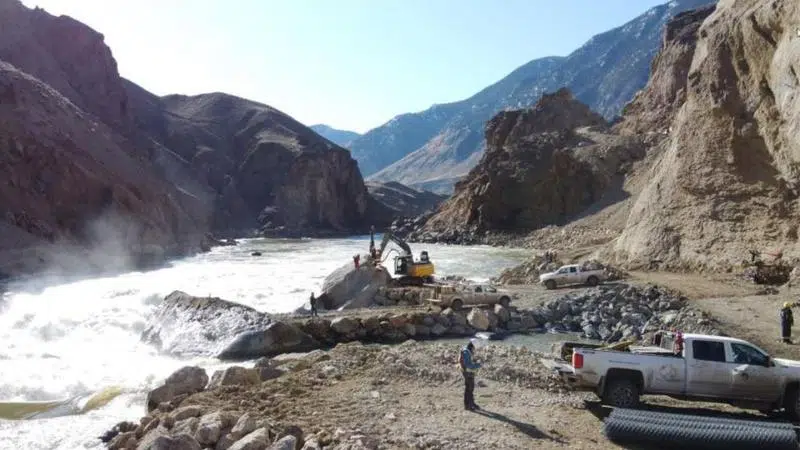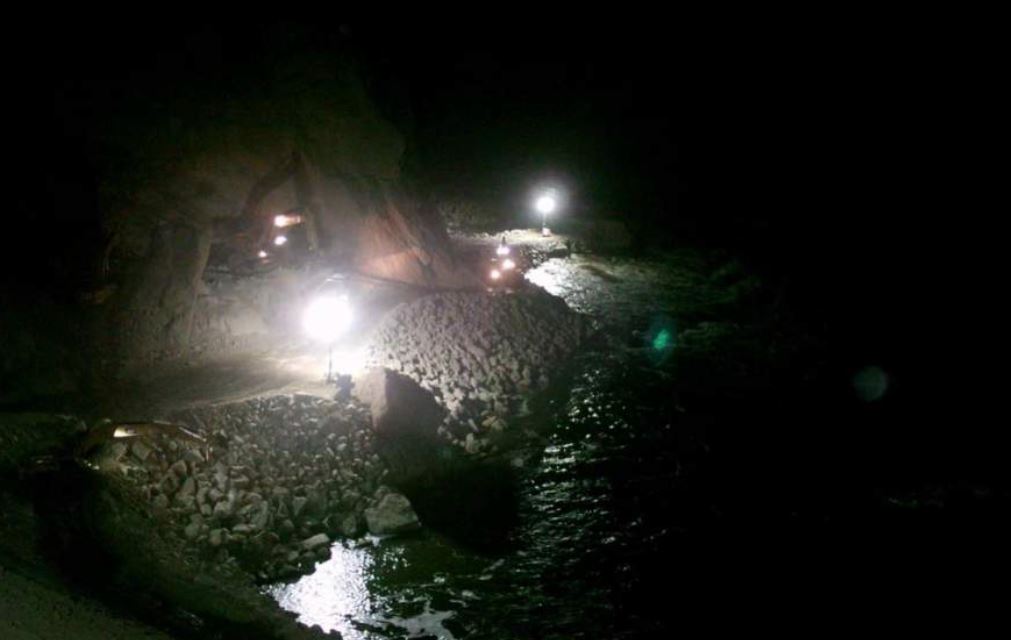
More blasting planned at Big Bar landslide site as river levels remain low
KAMLOOPS — The Department of Fisheries and Oceans (DFO) says work at the Big Bar landslide site north of Lillooet is going as planned, despite challenging conditions and the recent COVID-19 outbreak.
DFO says the contractor, Peter Kiewit Sons, is taking additional health and safety precautions on site, including limiting site access to lower the risk for workers.
Despite that, work continues around the clock as crews remove additional rock from the Fraser River. Kiewit is planning for more blasting next month to improve river access in multiple locations, needing to finish while the water levels remain low.
“Although Kiewit has been successful in meeting the winter work objectives, removing large boulders and debris, recent modeling done at low water shows that a mass of slide debris situated elsewhere in the river will cause heavy flows at high water, stopping fish passage,” DFO says in a release.



